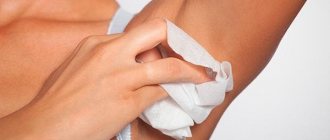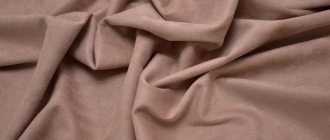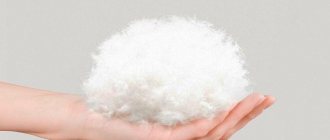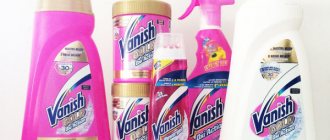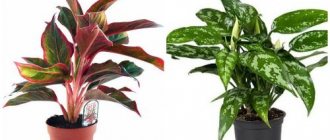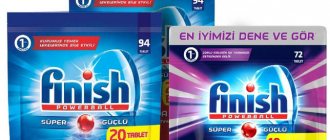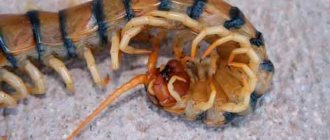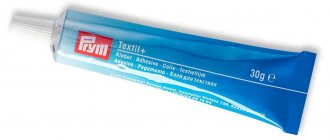Spandex (elastane) is the general name for many types of polyurethane elastic threads, highly elastic rubber-like fibers. The most common spandex-based fabrics are called: lycra, vairin, neolan, lubell, acelan, opelon, supplex.
The original purpose of spandex was planned as an analogue of rubber, a synthetic substitute for rubber. High strength characteristics and the ability to quickly return to its original state after deformation - all this has led to the wider popularization of spandex in a wide variety of industries, and especially in light industry in the production of a wide variety of materials.
What is spandex
The name "spandex" comes from the English word "expands", which means to expand or stretch. Initially, it was decided to create a material with properties reminiscent of rubber. However, it became widespread only in textile production. Initially, the material was produced in North America, but over time its production was organized in Europe, where it received another name - elastane.
In its pure form, polymer material is practically not used, since it looks like a film. It is added to other natural and synthetic fibers to impart stretch properties. Even 3% spandex added to natural fibers can change its structure. The material also underlies such synthetic materials as lycra, supplex, acelon and others.
Excursion into history
It was invented by Joseph Shivers, a chemist at the American company DuPont, and began to be produced on an industrial scale in the USA in the late fifties of the last century. A few years later he came to Europe and Japan. In Russia (USSR), the production of spandex began in 1975 at the Khimvolokno Production Association in the city of Volzhsky.
The name "Spandex" does not come from the chemical composition of the fibers, but is formed by rearranging the letters in the English word "to expand" - "stretch", and is a registered trademark, formerly part of DuPont). The stretchy fiber is usually called spandex in the USA and other North American countries, but in Europe the name Elastane is more often used.
Another popular name for this fiber is Lycra, which is also a registered trademark of Invista. In Japan it is known as Neolan, in Italy - Linel and Dorlastan (LA FIBRA ELASTICA BAYER).
This is interesting
More than 400 thousand tons of spandex are produced worldwide every year, and the demand for it is growing every year. The main share of consumption falls on China and the Asian region, the main producer is also China.
Compound
Spandex is made from petroleum products and consists of elastic threads containing about 85% polyurethane. The stretchability of the material threads is achieved by special weaving of long isotropic fibers with short and rigid ones.
Plastic
Thanks to the special structure, elastane threads tend to stretch 5–7 times and return to their original state. In this case, the number of times the material can be stretched is unlimited.
Shrinkage, weaving and dyeability
If the material is cared for correctly, its fibers will not lose their previous shape. However, if elastane is exposed to high temperatures, it will deform and shrink by almost half. In its pure form, spandex is white, but since it is easily dyed, it can have a variety of colors. The technique of weaving fibers is used only in light industry enterprises and is impossible at home.
Fabric properties
In its pure form, spandex has the following properties:
- very high thermal conductivity, so it does not retain heat at all, so it is hot in a warm room, and cold in a cool room;
- non-hygroscopic, which means it does not allow moisture to pass through at all, so wearing it in hot weather is uncomfortable;
- reacts poorly to ultraviolet radiation, burns out;
- is easily affected by high temperatures, can shrink and become deformed;
- does not withstand mechanical stress, which is why puffs easily form on the surface;
- It shrinks when sewn and therefore requires pre-treatment.
Despite this, elastane performs very well when combined with other materials. Even 2% of polymer fibers included in the composition add to the canvas:
- smoothness and plasticity;
- crease resistance;
- strength;
- shine;
- wear resistance.
The material also combines well with both natural and synthetic threads, is easy to dye, and is cheap. Items made from fabrics containing polymer material fit the figure well and do not require special care.
Application
Spandex - what kind of material is it and what is it made of?
It is widely used in sewing swimsuits for beach holidays, for sports swimming, as well as in the production of various types of sports uniforms.
Bright stage dresses made of spandex are decorated with sequins and rhinestones. With proper care and careful use, such things will last for many years and remain bright.
Today, elastane threads are the main additive to other fabrics, from which comfortable and durable clothes are subsequently sewn: jeans, leggings, T-shirts, tops, dresses, turtlenecks, sweaters and much more.
Where is spandex fabric used?
In its pure form, spandex is practically not used; only in rare cases is it used to sew stage costumes for gymnasts, circus performers, swimmers and figure skaters. Basically, elastane is added to the fibers of natural or synthetic fabrics.
Cloth
Since materials containing elastane fibers have maximum elasticity, they are used for sewing sports and tight-fitting clothing, in particular, suits for skiers, figure skaters, and gymnasts.
Shoes
Sometimes spandex is used in shoe making to increase the elasticity of nylon or other materials. In such shoes, the feet are more comfortable, since the material gently fits the foot without squeezing it.
Fabrics
When combined with a huge variety of materials, spandex helps create new fabrics. For example:
- stretch jeans are made from denim mixed with spandex;
- the combination of polymer material with cotton fibers makes it possible to create fabric for underwear that fits well;
- adding polymer material to nylon helps create shiny and elastic stockings and tights;
- A mixture of wool and spandex is used to sew thermal underwear.
spandex thread
Spandex is sometimes added to natural knitting yarns. It is easier to work with such threads because the material slips a little. In addition, the presence of elastane fibers in natural yarn significantly reduces its cost.
Reviews
Marina, Tyumen: “I recently made myself a spandex suit, it looks just great, I chose the color coffee with milk. The quality of the fabric is very good, it holds the shape of the product, it seems to be a little stretchy, and the sheen of it is like velvet, I am very pleased. Moreover, I found out that spandex also comes in different densities, suitable even for a bandage, so I’m thinking about getting a thinner one for a dress, the colors of the fabric are very diverse.”
Irina, Anapa: “I liked the dress made of this material, I bought myself a black, tight-fitting one, it even sparkled a little in certain lighting. The only thing that caused discomfort was that it constantly needed to be corrected, otherwise it would rise to the top.”
Lyudmila, Kerch: “A friend recommended this fabric to me. I was satisfied and very glad that I listened to her advice. I sewed a custom evening dress for a special event. The dress did not hinder my movement and hugged my body very effectively. And the best part is, of course, the price of this fabric.”
Most buyers vote for spandex due to its ability to not restrict movement. It is comfortable to move and exercise in such clothes.
Pros and cons of spandex
Materials containing spandex have the following advantages:
- the fabric turns out to be light, but at the same time wear-resistant;
- not affected by sweat secretions;
- durable and stretch well;
- practically do not wrinkle;
- paint well, but at the same time repel dirt and water;
- are inexpensive.
Despite this, fabrics with elastane fibers have several disadvantages:
- react poorly to ultraviolet radiation;
- do not tolerate exposure to high temperatures;
- are easily subject to mechanical stress, which causes snags to appear on the surface.
It is worth noting that the more elastane in the composition, the more pronounced the shortcomings appear.
A little about manufacturing technology
Today, spandex is produced all over the world. Initially (in the 1940s) it was made from petroleum, acids, and alcohol. Some water and air were also added .
Nowadays, it is obtained by melting the same initial components. The resulting mass is passed through thin holes. In this way the fibers are formed.
Important! Already at the production stage it is taken into account what the material will be used for. So, if the fabric must be rigid, then the fibers are made with corners. When soft, lightweight shock-absorbing material is required, they will be hollow, with smooth transitions.
Combination with other fibers
The use of spandex threads in combination with other fibers helps the materials acquire new properties.
Cotton
Cotton is considered the best material for underwear, as it helps the skin breathe, absorbs moisture, and is hypoallergenic. However, cotton fabric wrinkles, is inelastic and can shrink. When adding even a few percent of spandex to the composition, cotton does not lose its basic properties. On the contrary, the canvas becomes more plastic without losing its shape. Things are made more tight-fitting and last a long time.
Linen
It is considered the best fabric in relation to the body. It is not hot in summer, but not cold in winter either. The fabric breathes and allows moisture to pass through well. Since linen is completely inelastic, it wrinkles a lot. To reduce this indicator, spandex threads are added to flax fibers. After this, the fabric practically does not wrinkle, but retains its original qualities.
Viscose
Viscose, made from wood cellulose, is soft and hygroscopic. The material is very pleasant to the skin, however, it is too fragile, as it tears easily. Thanks to the spandex added to the composition, viscose has the necessary strength.
Polyester
Polyester is used in the weaving industry only in combination with other materials, as it is absolutely not suitable for wear on human skin. Polyester mixed with cotton or viscose becomes more comfortable to wear, however, it remains completely inelastic. The slight addition of spandex to the fibers helps increase the ductility of the fabric.
Lycra
Lycra is a fabric based on spandex fibers. Unlike pure material, lycra has a more matte surface.
Satin
By adding spandex to satin, the material becomes durable, but at the same time soft and airy.
Nylon
Nylon itself is a very durable and dense material, devoid of elasticity. Adding fibers to the composition gives the fabric the necessary ductility and wrinkle resistance.
How to choose quality spandex
When purchasing products made from materials containing spandex, pay attention to the following criteria:
- there should be no pellets or puffs on the surface; a homogeneous, even structure of the material indicates a high quality of the fabric;
- check how the canvas stretches and returns to its original position;
- fabric containing spandex has a pleasant smoothness;
- if there are stains on the surface, this indicates poor quality of the material.
Always feel and consider the material carefully when choosing.
Care
How to care for and wash spandex? This is also worth talking about in detail to avoid spoiled things.
First of all, about washing: you can wash it by hand or in a washing machine in the “delicate wash” mode. Separate from other things, using gentle means. Before washing items made from or containing spandex, you must fasten all zippers, buttons, snaps, and Velcro.
If the item has rhinestones or other decorations, it is better to wash it by hand or place it in a special bag for washing in a machine.
Squeeze carefully with your hands, in the machine at minimum speed.
Dry only naturally: on a clothesline. Drying on a radiator or in a dryer is contraindicated.
Avoid direct sunlight on the fabric. This may ruin its color.
Features of sewing things from spandex
If you decide to sew something from a material that contains spandex, follow these instructions:
- It is unacceptable to mark the location of the future seam with a pin, otherwise there will be puffs; draw lines with a special pencil or soap;
- choose needles only for stretch or knitwear;
- Use an elastic thread to sew parts together.
Always test the seam on an inconspicuous area of fabric before starting work. See how the material will behave under a particular tension or thread length.
Leading manufacturers
Recently, many manufacturers have been producing spandex with various additives. According to consumer reviews, the following companies have gained the most popularity:
- Al Haram Trader, Pakistan;
- Akshar Enerprise, India;
- ANTEX+CASE GMBH, Germany;
- A&K Fabrics and Textile, Bangladesh;
- as well as textile companies from Russia, Turkey and China.
PHOTO: beru.ruSpandex Loads 8% fabric is used for sewing sportswear
How to care for fabric
Materials containing spandex are easy to care for.
Wash
Hand wash
It is recommended to wash items containing elastane by hand using lukewarm water. Wring out the product carefully and do not twist it. It’s better to let the water drain and hang it over the bathtub to dry.
You can also wash the product in a machine, but only on a delicate cycle without spinning. Use only non-aggressive powders, or even better, washing gel. Never use chlorine bleach.
How to dry and iron correctly
Spandex is afraid of high temperatures, so dry things only in natural conditions, away from heating devices. It is not necessary to iron the clothes; when you put them on, they will straighten themselves on the body. If you still want to iron the product, turn on the low temperature setting on the iron and first iron an inconspicuous area of the fabric. Material based on natural fibers can be ironed through gauze or cotton fabric.
Spandex is a synthetic material primarily used to complement natural or man-made fibers. Fabrics become more viscous and elastic, practically do not wrinkle and last longer. Before purchasing products containing spandex, be sure to consider the quality of the material, and after purchasing, take proper care of the item, then it will last as long as possible.
